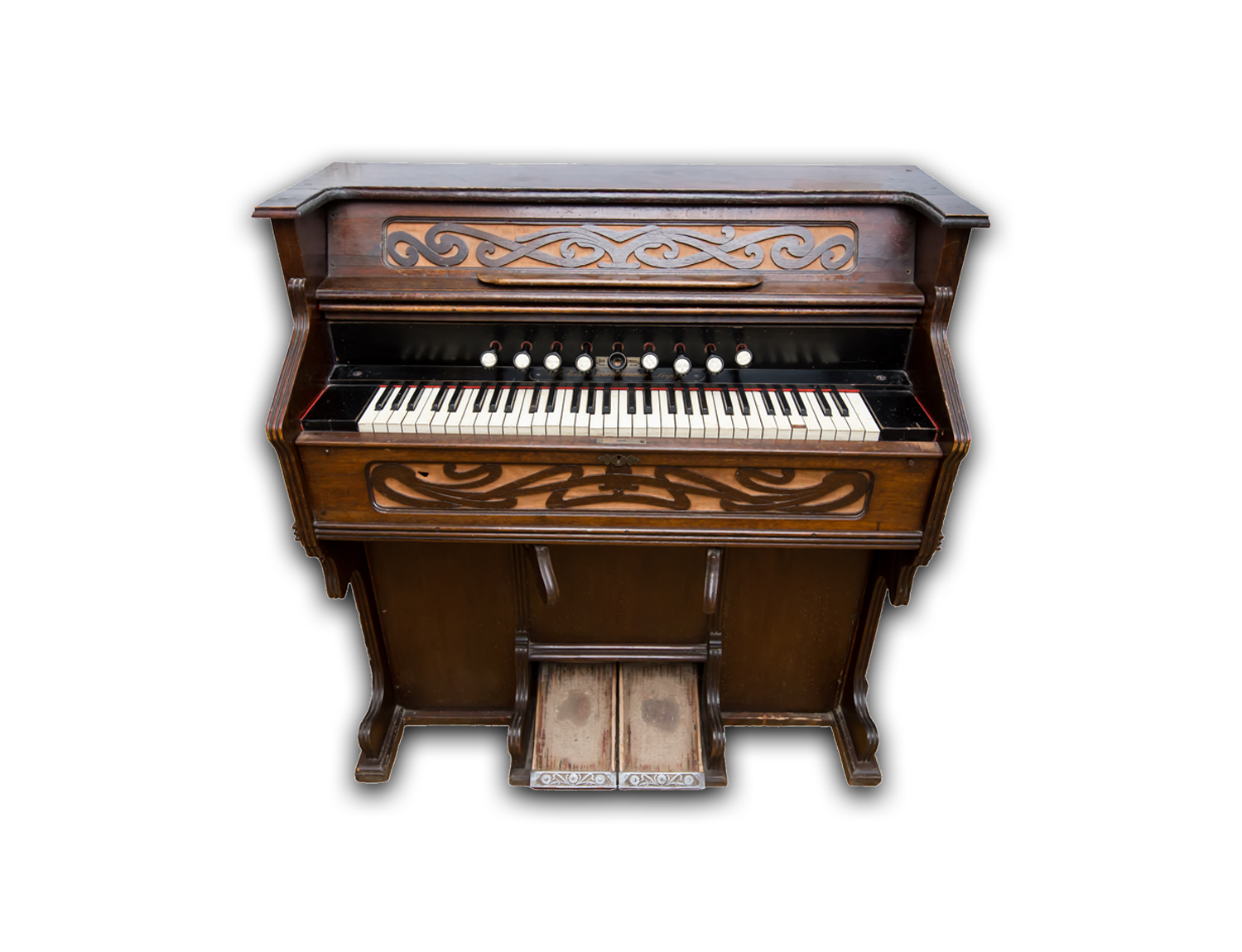

The SwarShala Indian music software includes Organ and over 100 other perfectly sampled virtual Indian instruments.
The pump organ, distinct from the harmonium, has been a significant musical instrument in Indian theatre, particularly in the 19th and early 20th centuries. Unlike the smaller, portable harmonium, the pump organ is a larger, more complex instrument, with multiple foot pedals used to pump air through a set of reeds. This action produces sound when air passes through the reeds corresponding to the keys being pressed. The instrument’s deeper, resonant tones provide a rich, fuller sound compared to the harmonium, making it suitable for larger, formal settings such as theatres.
In Indian theatre, particularly in the early modern period, the pump organ played a critical role in creating the musical backdrop for dramatic performances. It was often used for operatic or theatrical productions that featured elaborate musical scores. The instrument's wide dynamic range, with its ability to produce both soft and powerful tones, allowed it to evoke the varying emotional intensities required in the theatrical narrative. The organ’s sustained chords and layered melodies could enhance the grandeur of the performance, especially in religious or historical plays.
The presence of the pump organ in Indian theatre music also represented a meeting of Western and Indian musical traditions. The instrument, originally European in design, was adapted by Indian musicians to fit the unique needs of local performances. In theatre, it was often employed to underscore key moments in the plot, either as an accompaniment to vocalists or to create dramatic soundscapes that heightened the tension or mood of a scene. While it was later supplanted by the more portable harmonium, the pump organ remains a symbol of a time when Indian theatre music embraced Western instrumentation while still retaining a distinct cultural identity.
Today, the use of the pump organ in Indian theatre is rare, but it is still appreciated for its historical significance and its contribution to the evolution of music in Indian performing arts. Its grand presence, once a dominant feature of theatre orchestras, continues to influence the soundscapes of certain regional and traditional theatre forms.